Epirus – Zagoria, Vikos Gorge & Ioannina
This is my fifteenth and final post from the spring 2023 Via Egnatia Tour sponsored by Adventures Abroad and led by our friend and fellow birding enthusiast, Victor Romagnoli. It has been a wild ride from Istanbul to Ioannina with many amazing sites along the way that are seldom offered on most tours of Greece and Turkey. For example, in the last post we found ourselves the only tourists walking along the waterfront of the city of Kastoria admiring the mansions of the bygone fur traders who put the place on the map. In this post we’ll venture high into the Pindus Mountains in the most northwesterly province of Greece, Epirus. Only miles from the border of Albania we’ll explore the stone villages and bridges of Zagoria, then marvel at Vikos Gorge, one of the natural wonders of Greece and finally end our tour at the city of Ioannina where we’ll walk the streets of a city still dominated by traces of the Ottomans who ruled the city for almost 500 years. It promises to be one hell of an ending for a trip that has had a touch of everything an aspiring adventurer could want.
Epirus

Epirus, despite being far away from the areas usually associated with classical Greece, has had a long and at times distinguished history. But as with most things Greek, it starts not from history, but from mythology. According to myth, Epirotes are direct descendants of the demi-god Aeacus who was a son of Zeus born on Aegina one of the Saronic Islands that lies just 17 miles from Athens. He ruled that island for many years and became known for his wisdom and justice, so much so that after his death he became one of the three judges in Hades. However, it is his lineage for which he is perhaps best known. He was the father of Telemon whose son in turn was the great Ajax, one of the great heroes of the Iliad. Even more famous was another of his grandsons through his son Peleus, none other than Achilles who in turn fathered Neoptolemus, also known as Pyrrhus. It was the latter who is claimed as founder of the line of Epirote kings that by 370 BCE had unified Epirus into a single powerful state in northwest Greece.
The most famous of the kings of Epirus was undoubtedly Pyrrhus the Great who had close family ties to the Macedonians, second cousin of Alexander the Great, and after his death engaged in many battles fighting over the remnants of that empire before turning his attention to Rome. The Romans had gradually been encroaching on the long established Greek colonies in Sicily and they called upon Pyrrhus to help them and he answered the call. What followed were a series of victories over the Romans, but at such a cost that eventually, even though they lost every battle, the Romans prevailed just by sheer numbers. Thus we have the term ‘Pyrrhic victory’.
Pyrrhus returned to Greece and continued to wage war, this time against the Spartans and was eventually killed in a battle at Argos. Other than Hannibal, he is remembered as perhaps the greatest obstacle to Roman expansion in the early Roman Empire. However, eventually, a century after Pyrrhus’ death, Epirus was fully incorporated into the Roman Empire and remained so long after the western Roman Empire collapsed. It was a Byzantine protectorate for almost a thousand years before falling to the Ottomans in the 15th century. It did not become part of Greece until 1913, which in terms of history is not that long ago.
Zagori UNESCO World Heritage Site
We start this post by visiting yet another UNESCO World Heritage Site, the eighth on this trip including all six in northern mainland Greece. Zagori is not a single site, but an area within the Pindus Mountains defined by unique stone villagers that are connected to each by a series of roads known for their distinctive Ottoman bridges. This is how the area was described by UNESCO when it was inscribed in 2023, only a few weeks before we visited.
Located in a remote rural landscape in northwestern Greece, small stone villages known as Zagorochoria extend along the western slopes of the northern part of the Pindus mountain range. These traditional villages, typically organized around a central square containing a plane tree and surrounded by sacred forests maintained by local communities, showcase a traditional architecture adapted to the mountain topography. A network of stone-arched bridges, stone cobbled paths, and stone staircases linking the villages formed a system that served as a political and social unit connecting the communities of the Voïdomatis River basin.
Crossing into Epirus from Kastoria the road winds its way upward into the Pindus Mountains and the landscape is wild to say the least.
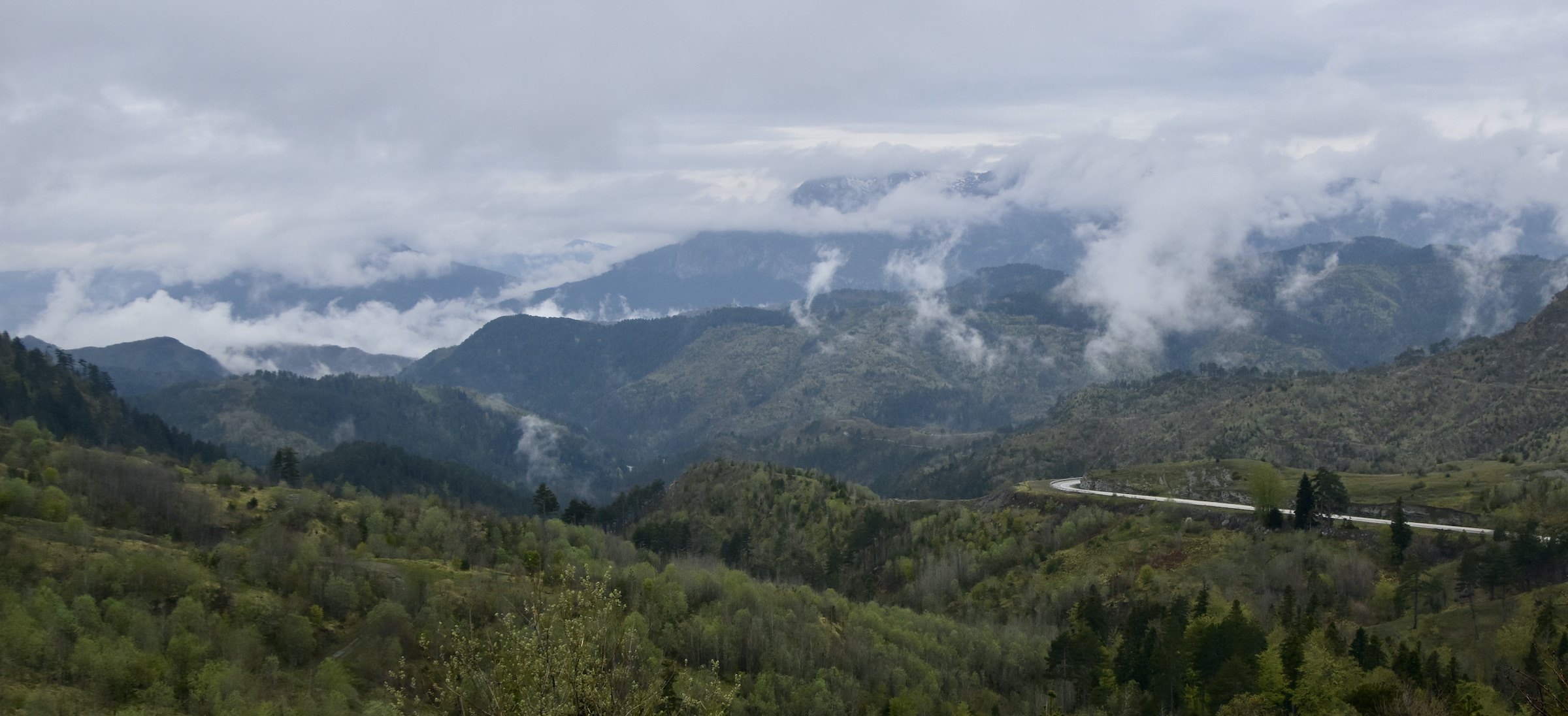
There are snow-capped peaks in the distance which mark the border between Greece and Albania.
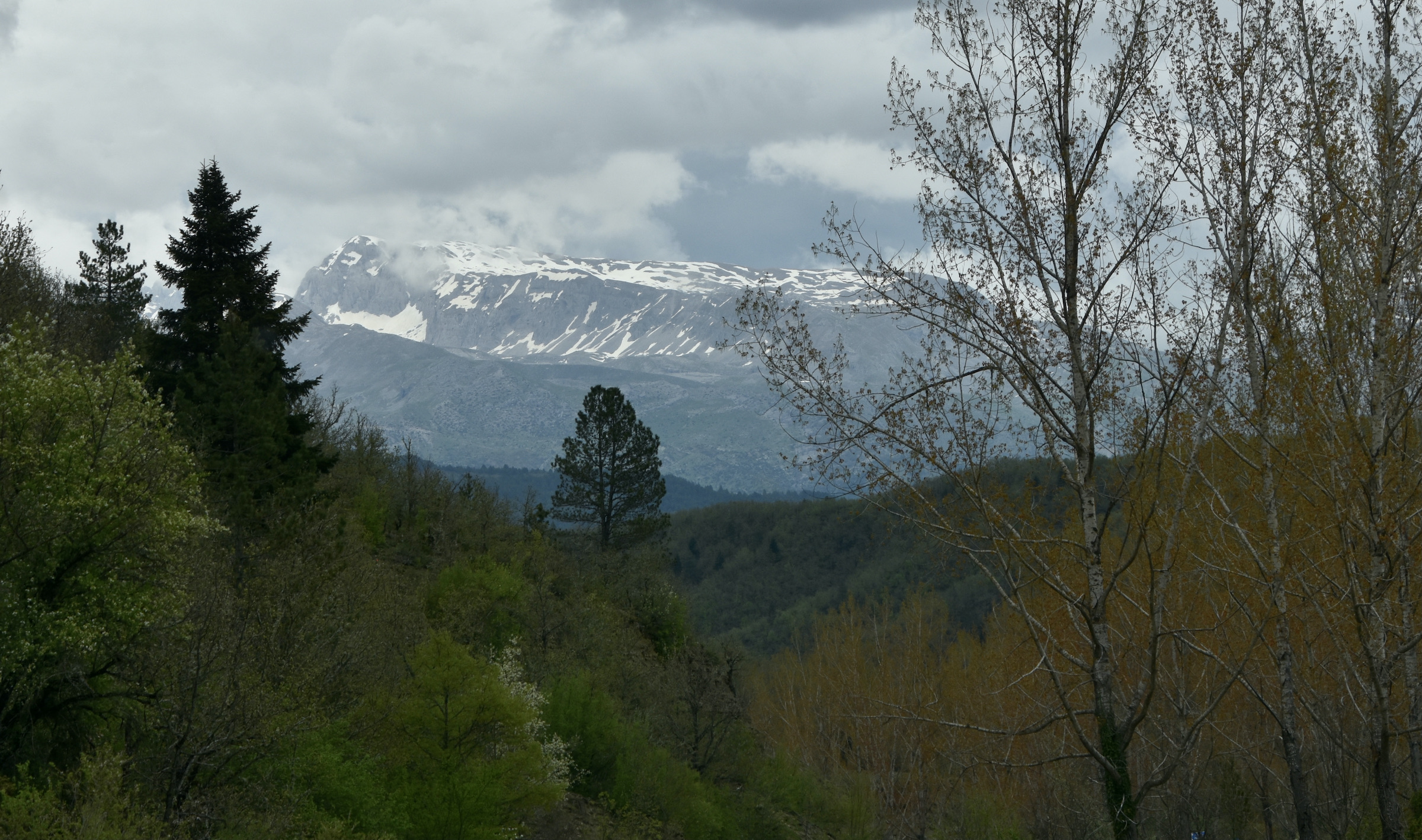
And we meet as many cows on the road as oncoming traffic. We are really out in the back of beyond in this region of Epirus.
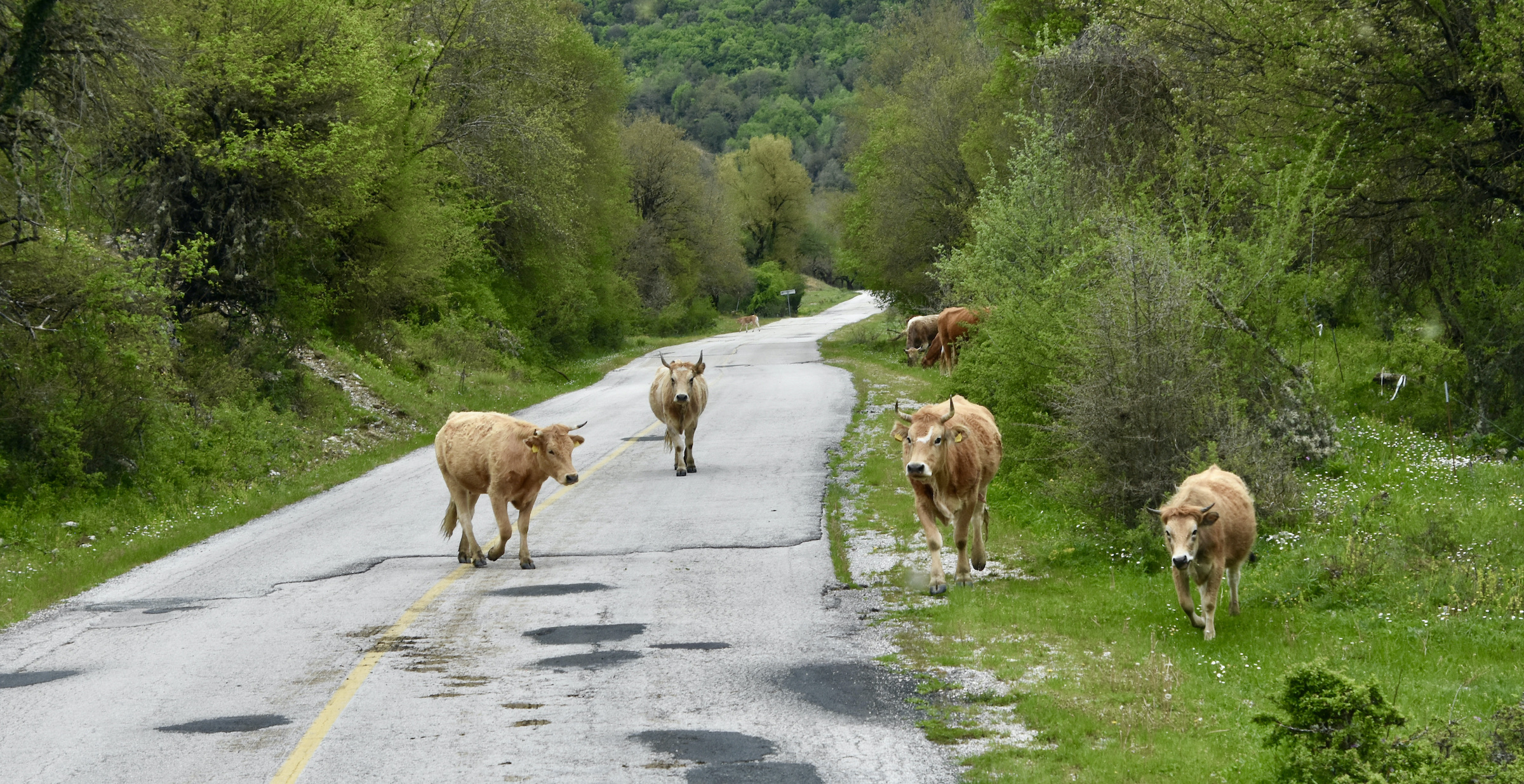
I have borrowed this photo from the UNESCO site to give a better idea of what the stone villages of Zagori look like.
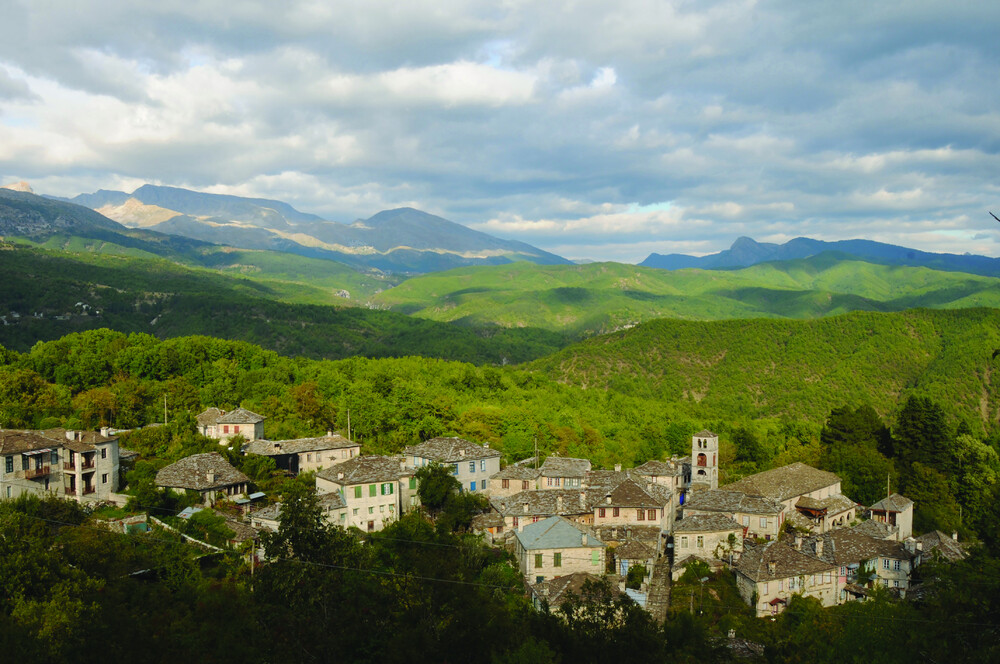
This is the Zagori Philoxenia Hotel in the typical Zagori village of Monodendri where we spent a night. It is a modernized version of a Zagori stone house and a great base for exploring the area. There are paths that lead between the villages and would make for a great hiking holiday just on their own.
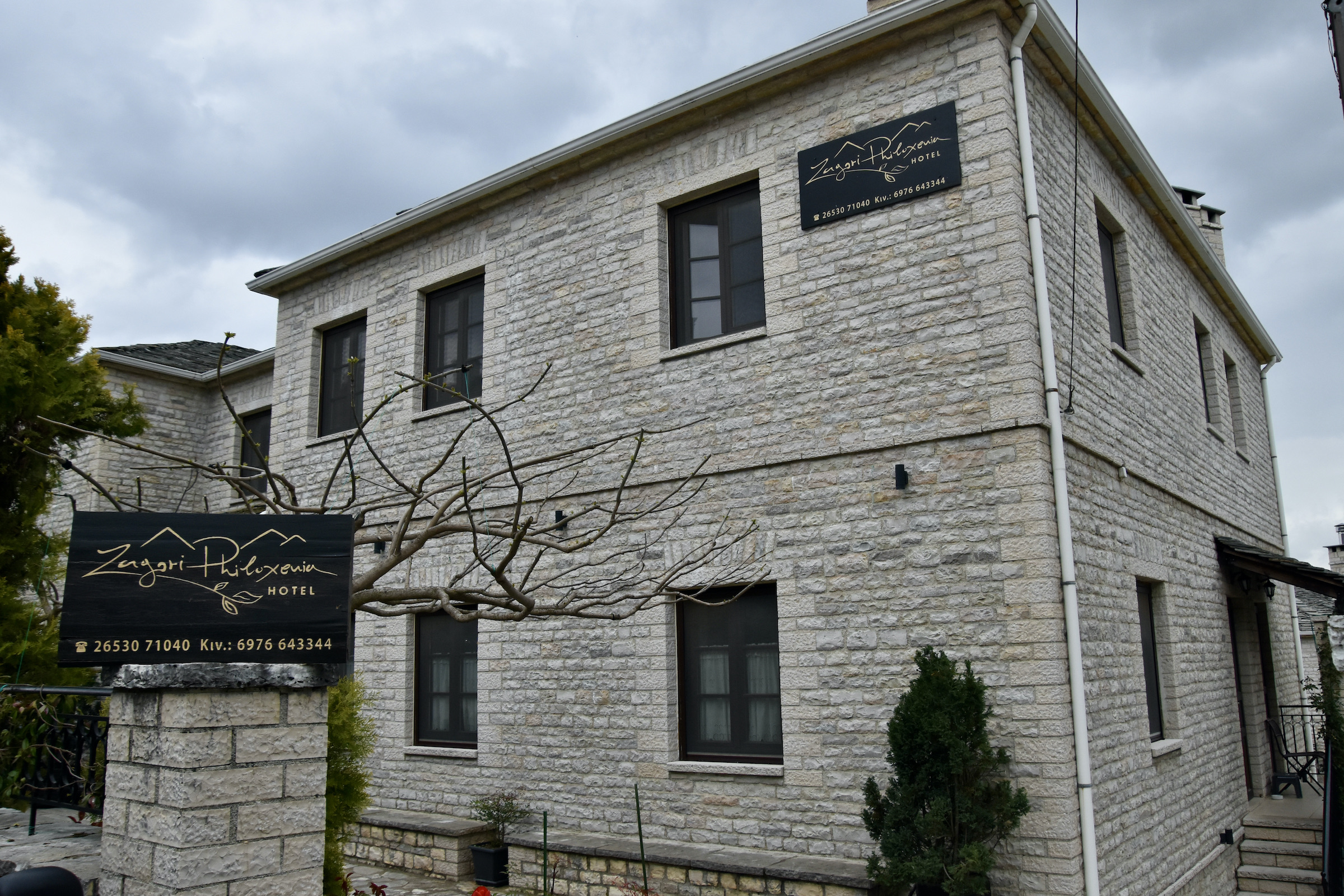
Even more remarkable than the villages are the Ottoman bridges. This is the Konitsa Bridge over the Aoös River that was only completed in 1871 and is the longest single span stone bridge in Epirus. It looks impossibly improbable. How do the stones not simply succumb to gravity?
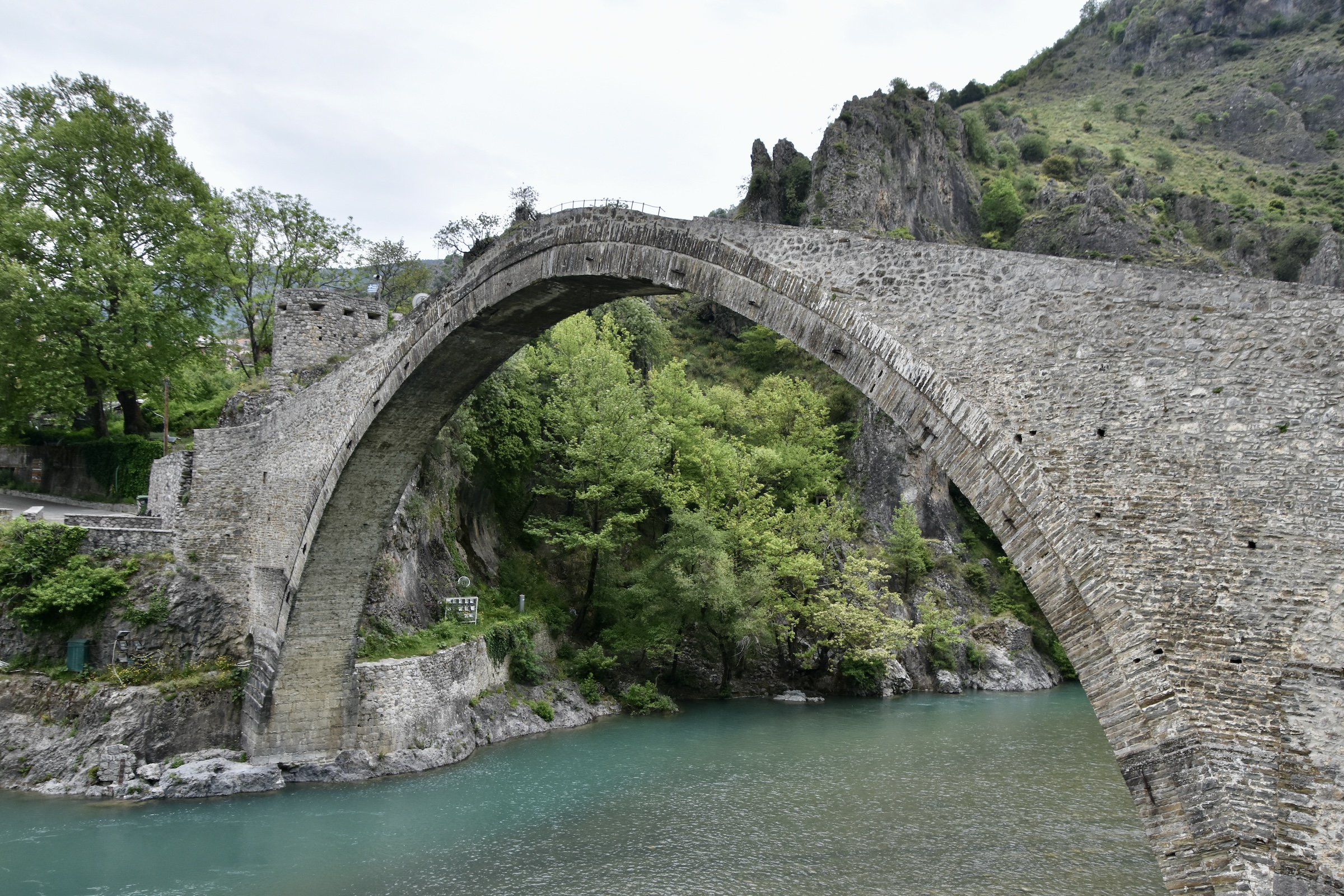
Walking over the bridge is not for the faint of heart as the stones are slippery and the railings only come up to your knees in places and as you can see, it’s a long way down.
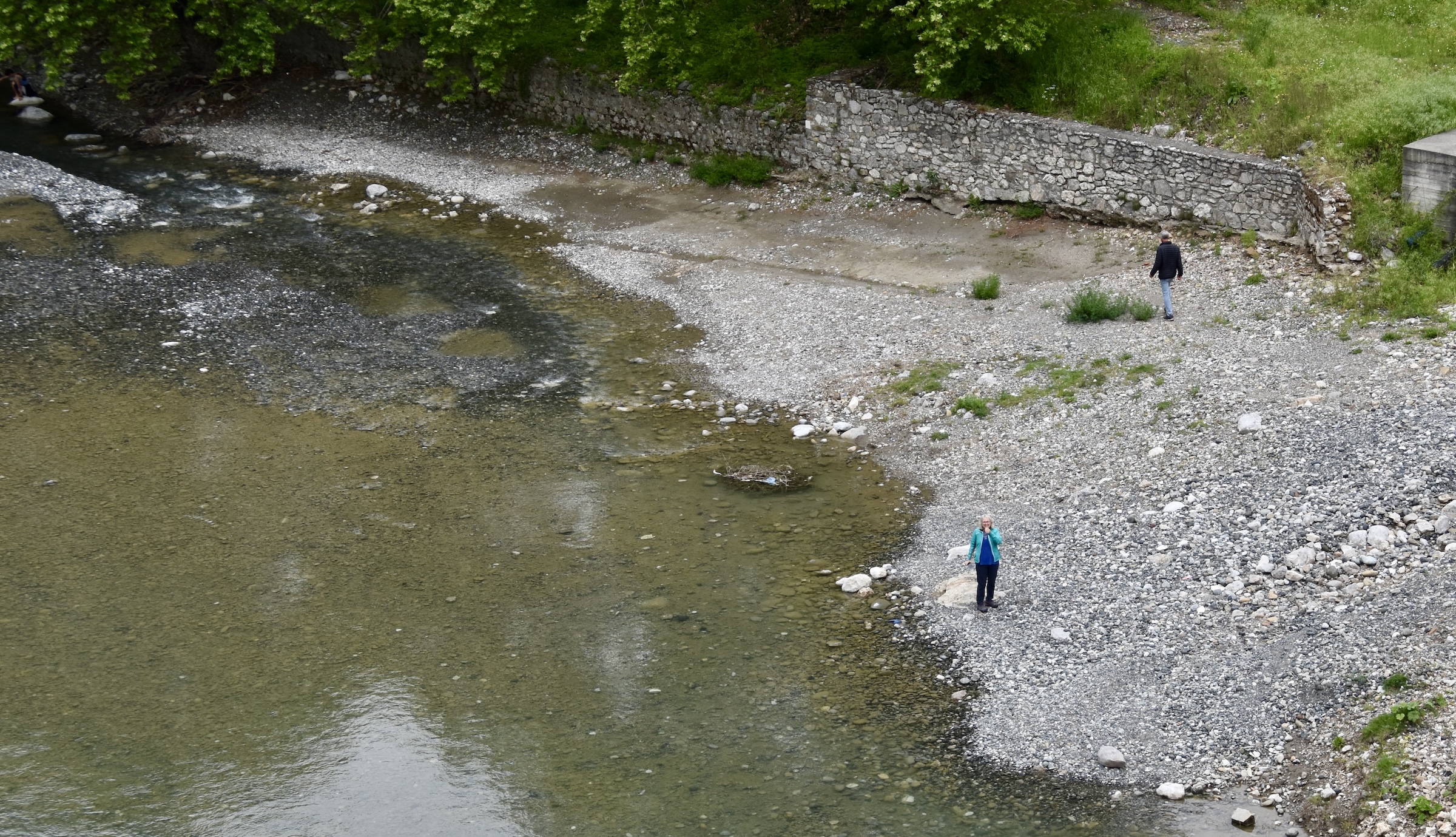
The Noutsos Bridge, which dates from the mid-18th century, has a very impressive backdrop with this rock pinnacle behind it.
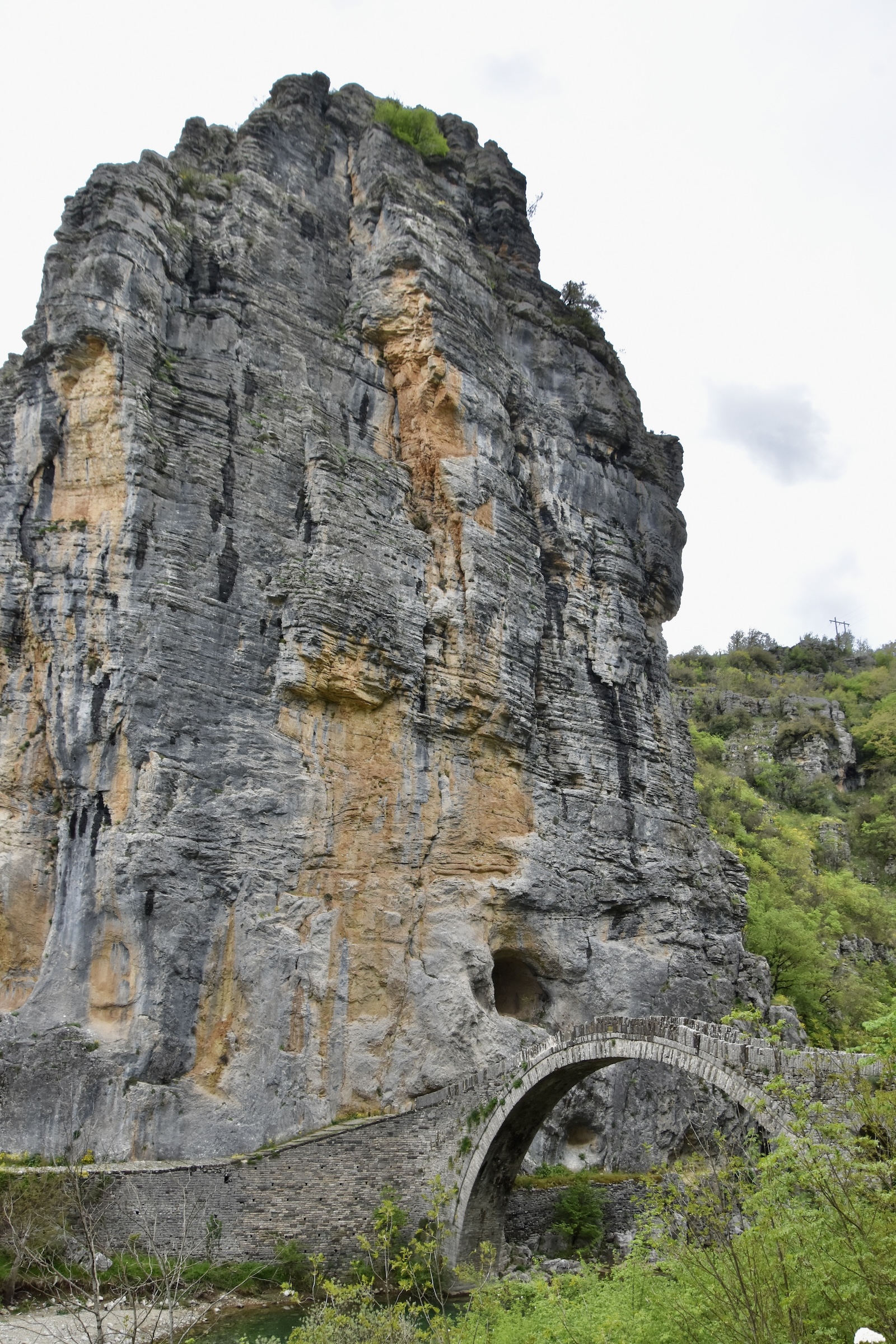
These bridges also make for some of the best photo ops on the entire trip.
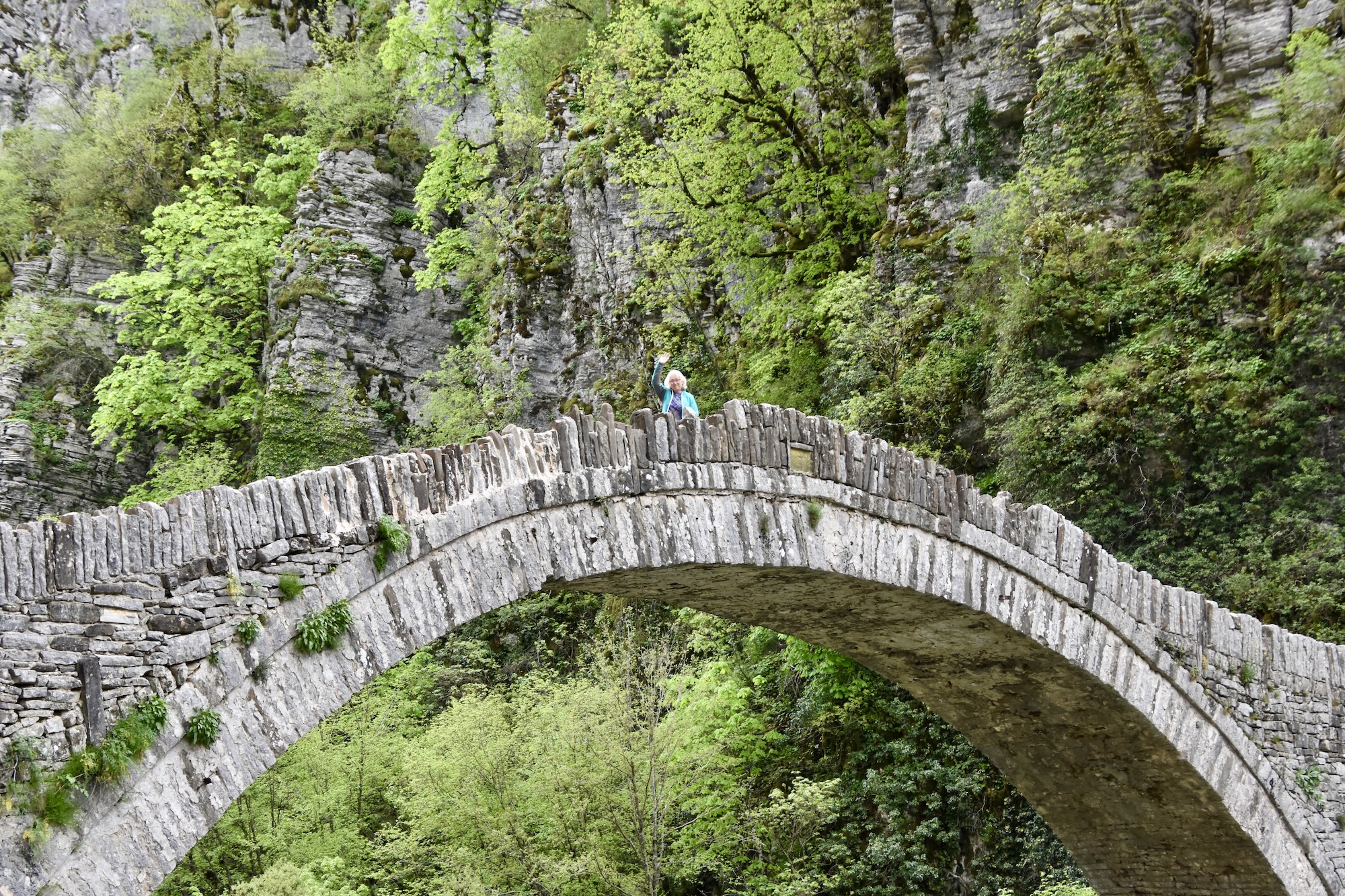
In case you are asking yourself “Where have I seen this style of bridge before?” the answer is probably the Mostar Bridge in Bosnia & Herzegovina that was destroyed by the Croats in their war with the Bosnians in the 1990’s. Alison and I visited it after it was rebuilt and it’s an amazing structure, but these semi-abandoned stone bridges of the Zagori have an indelible charm that is quite unlike the urban setting of the former.
Vikos Gorge
Undoubtedly the greatest natural attraction in Epirus is the Vikos Gorge which The Guiness Book of Records lists as the world’s deepest relative to its width. In other words, it’s really steep and narrow – over 1350 metres (4,429 feet) in height at its tallest and only a few metres at its narrowest. It is possible to hike down into the gorge from the village of Monodendri and maybe I would have forty years ago, but for now, just like the Grand Canyon, the most practical thing to do is just gawk at it. There is a viewing place on a winding road that makes its way upward to the rim from Monodendri which we are headed to.
Along the way we pass by another major natural wonder in Epirus, the Stone Forest of Zagori which is composed of limestone formed at the bottom of an ancient sea that has been uplifted and eroded into distinct pillars. It goes on for a fair distance before we come to the end of the road.
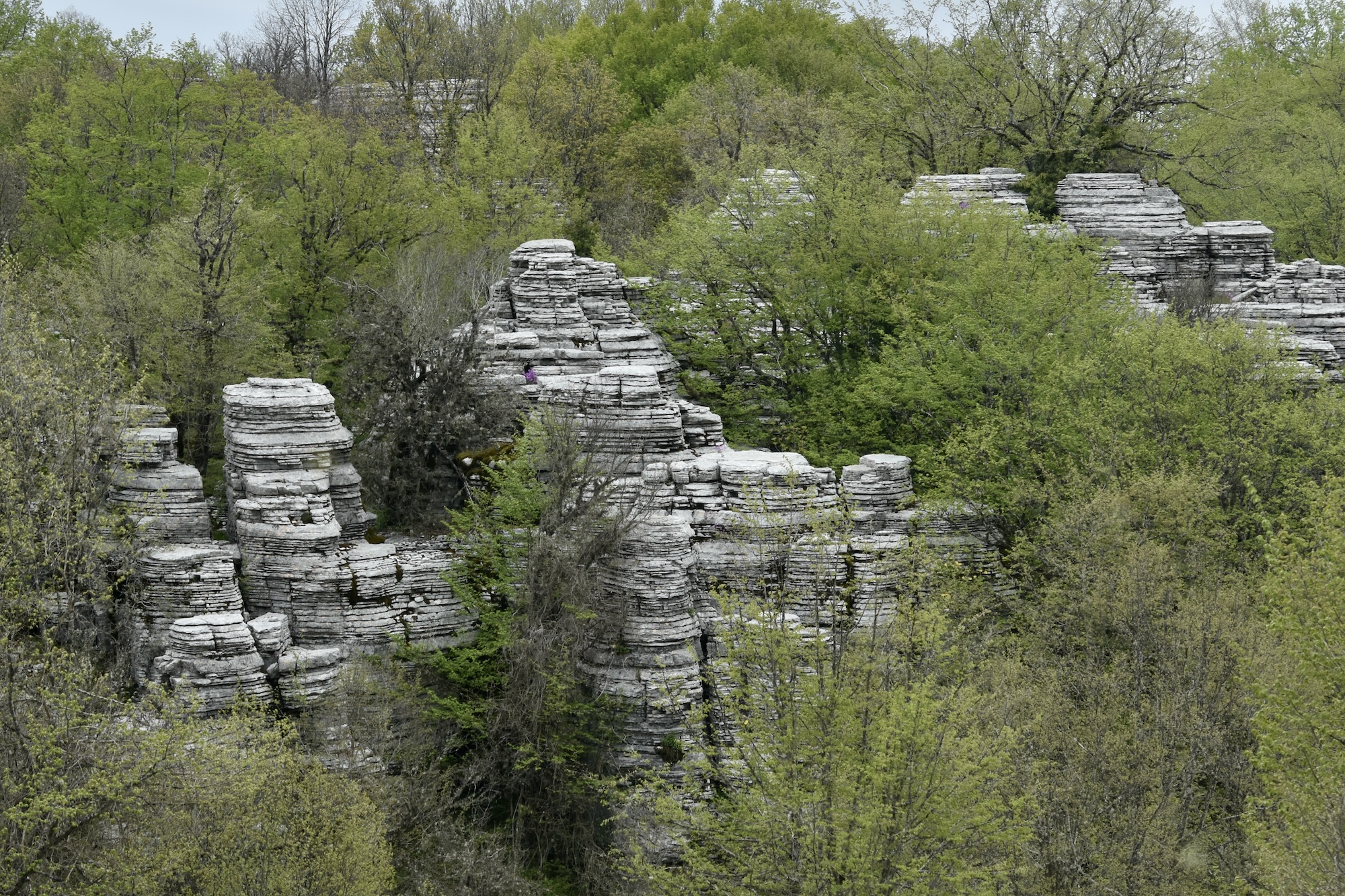
From the small parking lot it’s a short walk on a good pathway to the viewing platform.
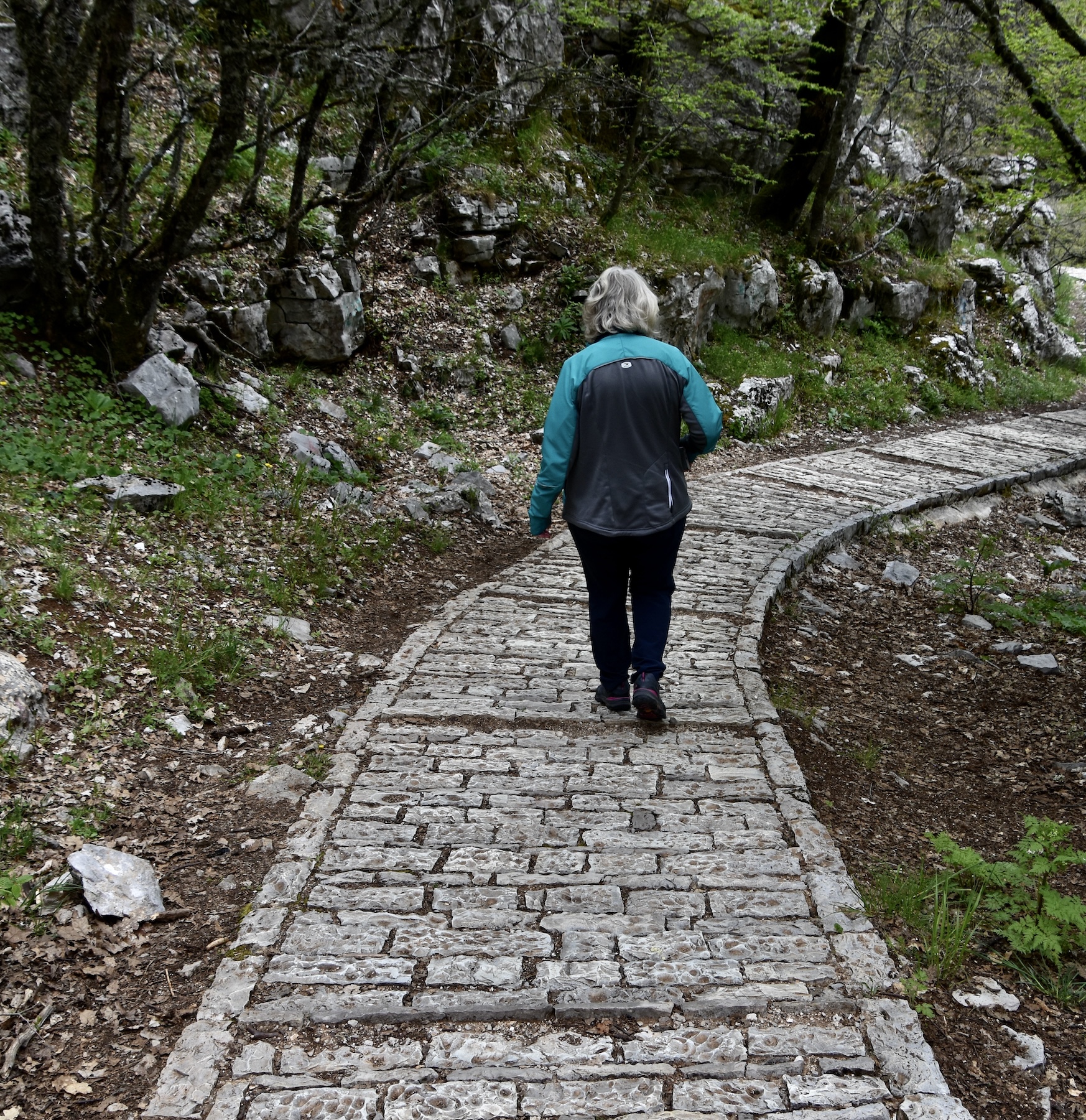
Leaning over the railing, this is what you see once you get there. Simply awesome.
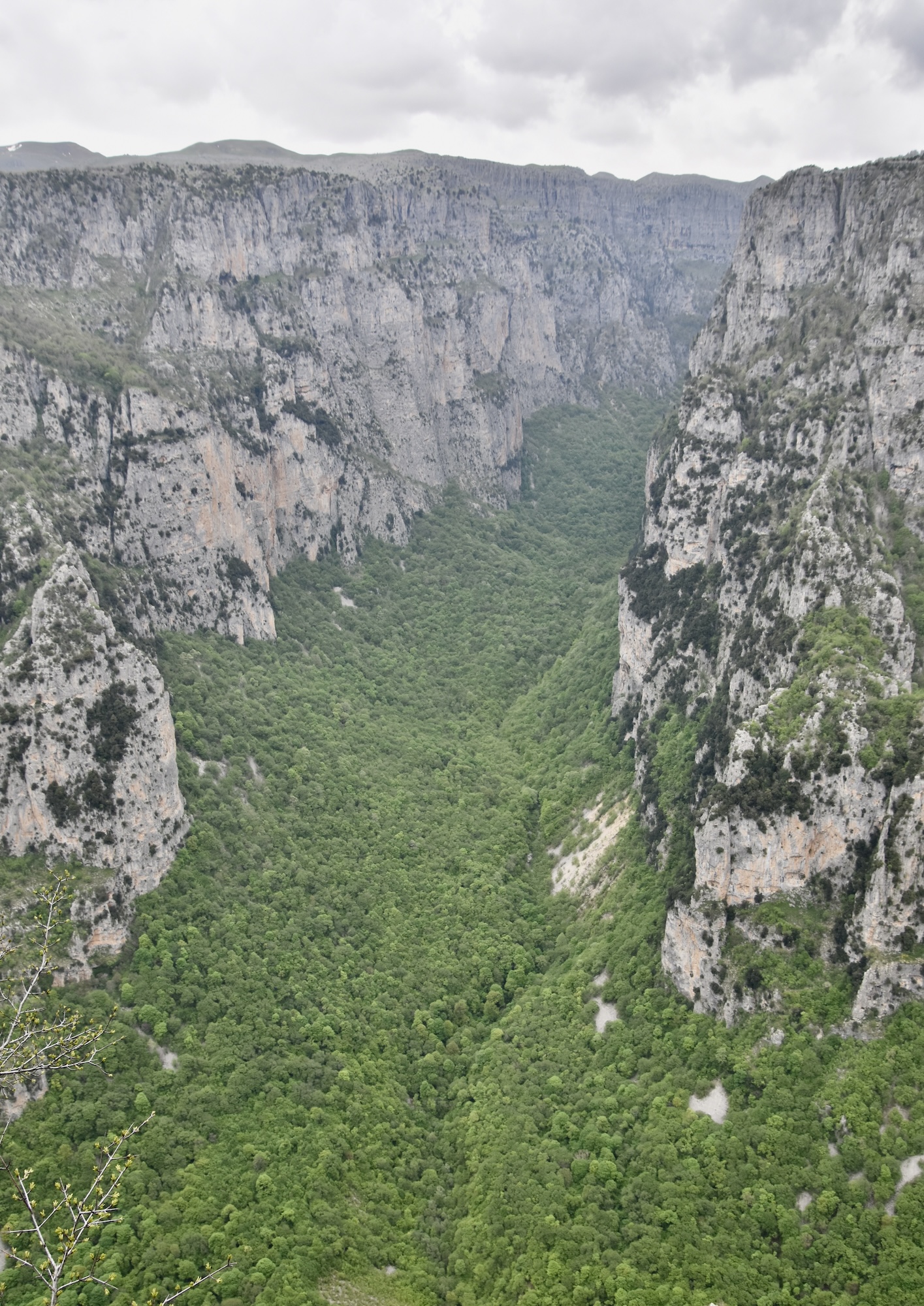
For a different perspective we take a walk on the narrow path that goes on for another couple of hundred yards. This, even more so than the bridges, is not for the timid or those with acrophobia because the path is narrow with nothing to hang on to and it’s a long, long way down.
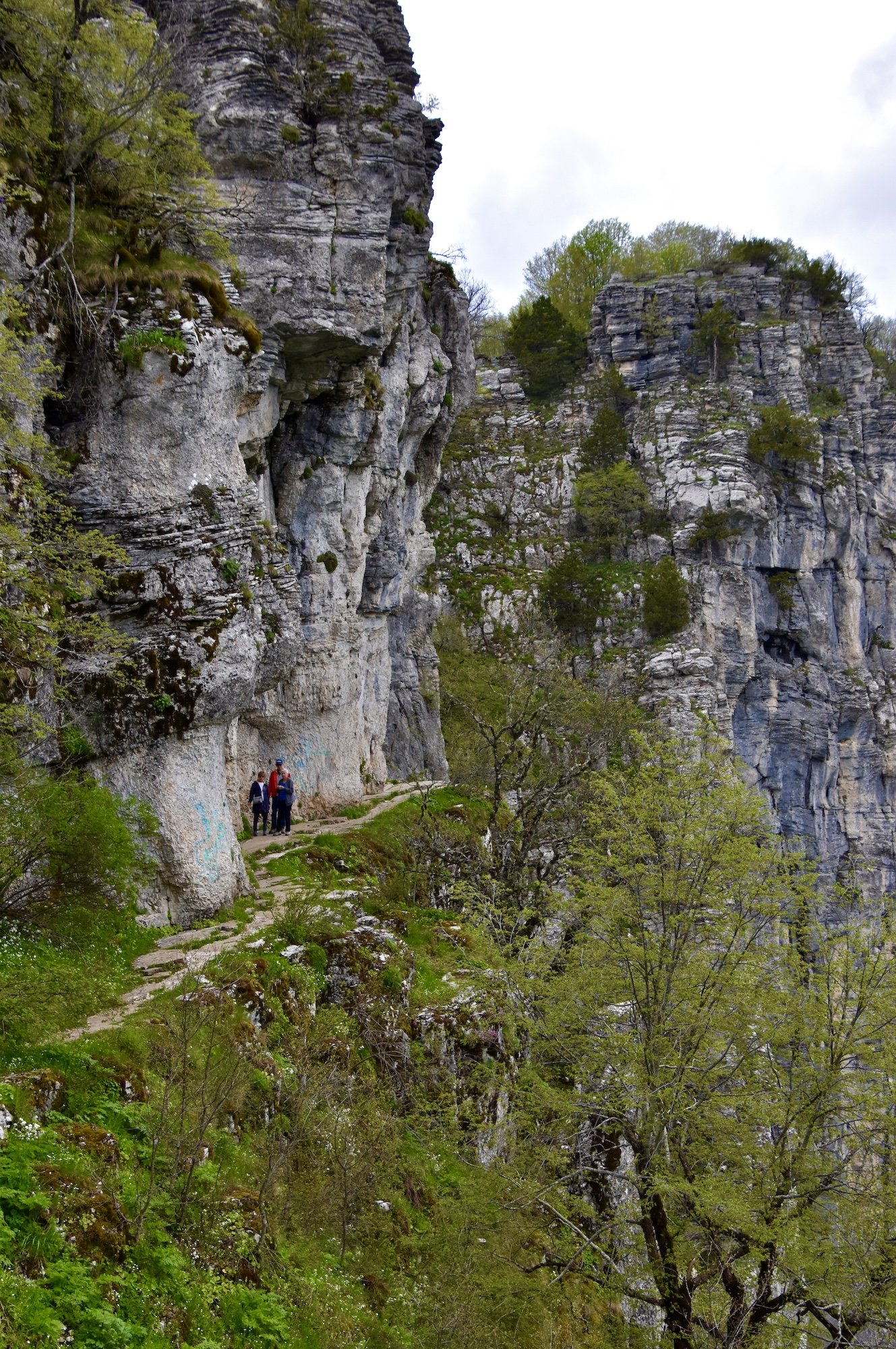
In a couple of spots like that rock outcrop coming up it’s only about a yard wide.
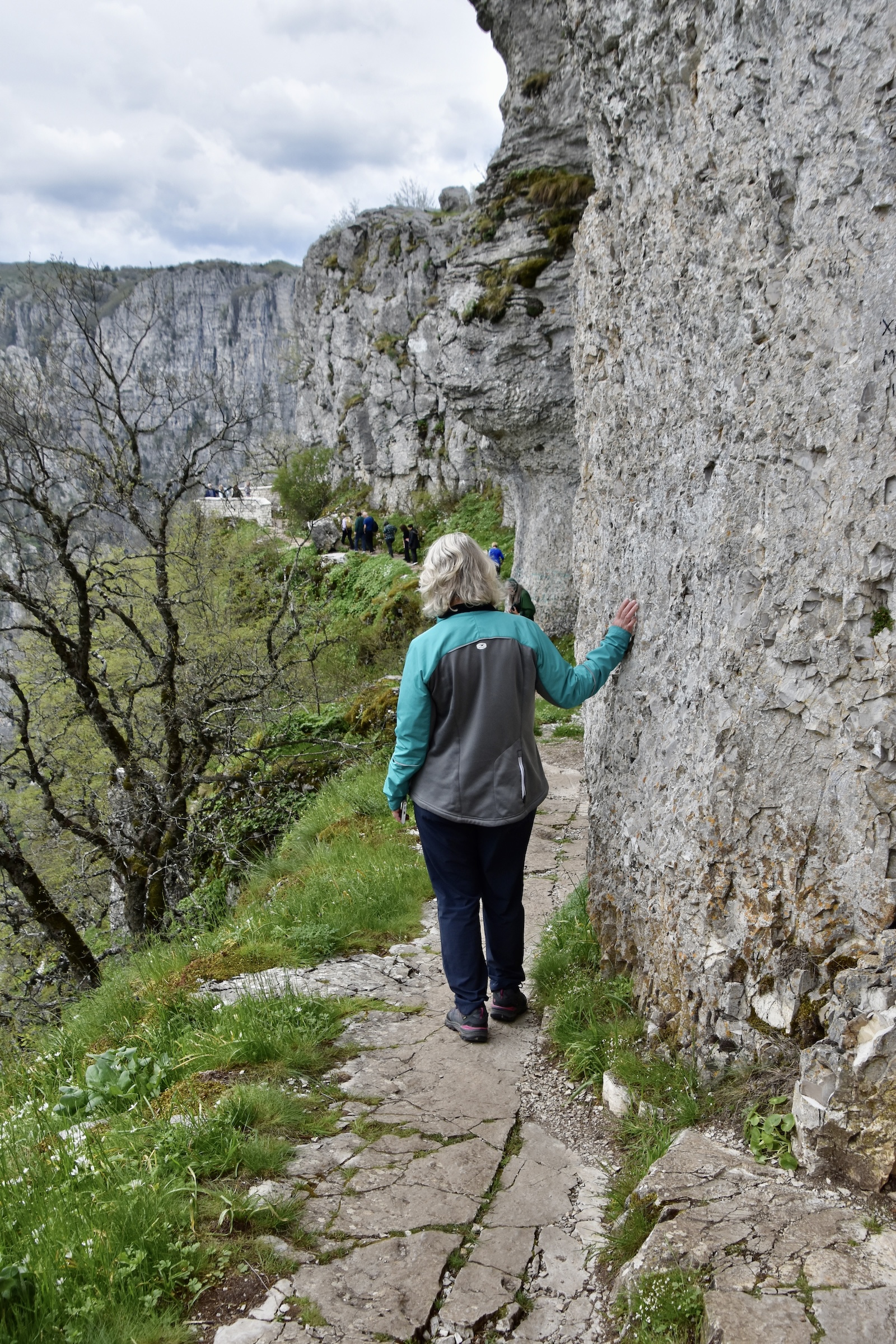
This is the view from the end of the path where you get a much better sense of how the Voidomatis River has created this wonder of nature. Is it worth the risk? Only you can decide. For Alison and I, yes.
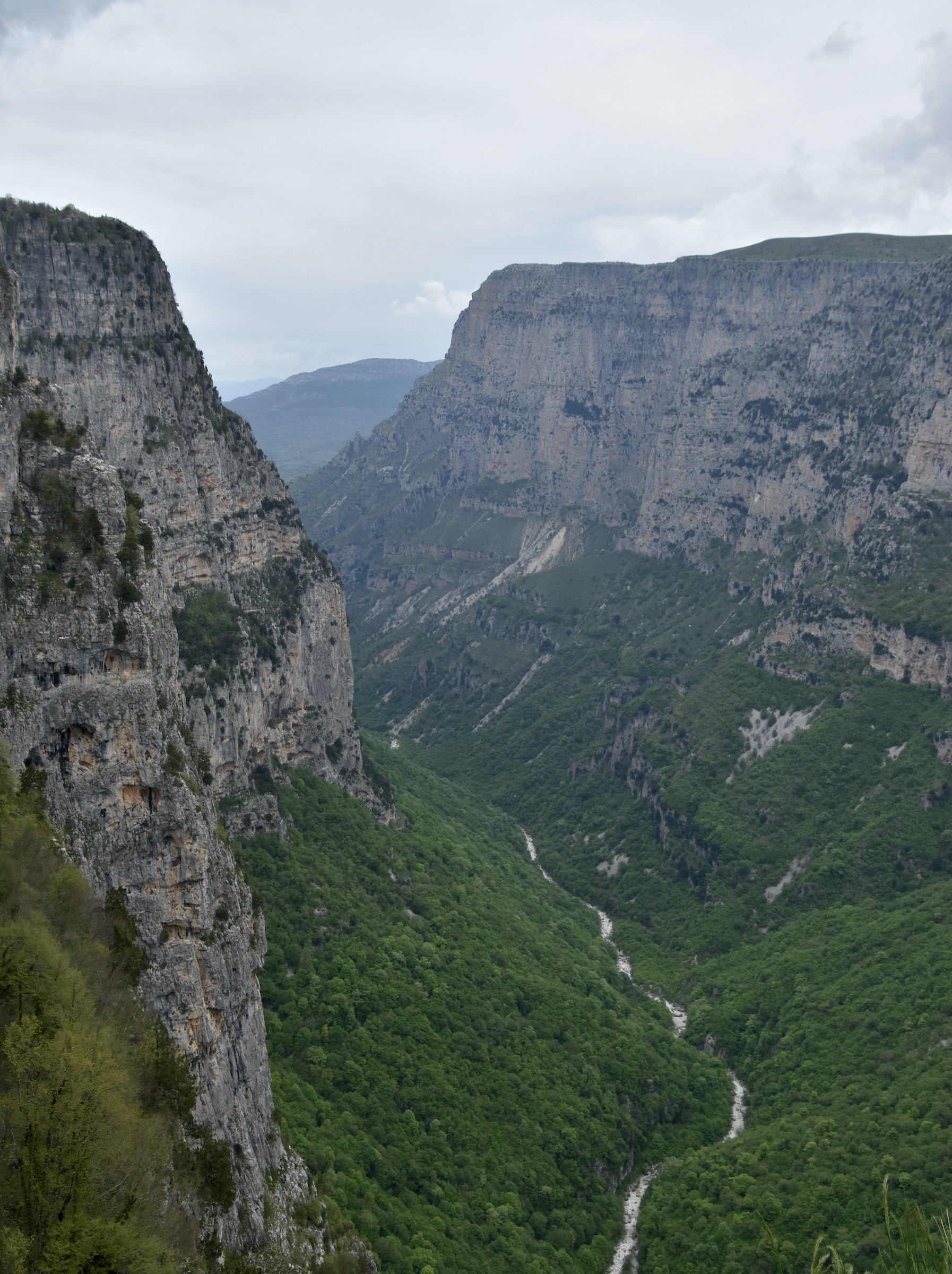
Ioannina, Capital of Epirus
Our journey comes to an end at the small city of Ioannina, the capital of Epirus, which Alison and I have visited twice before. It was the terminus of our very first Adventures Abroad tour almost thirty years ago. Later on, our own we passed through on our way from the Ionian Islands to Athens. On this third visit I noted many positive changes in the sense of things being open to the public that weren’t on our first two visits like the Silversmithing Museum located within the old Ottoman citadel.
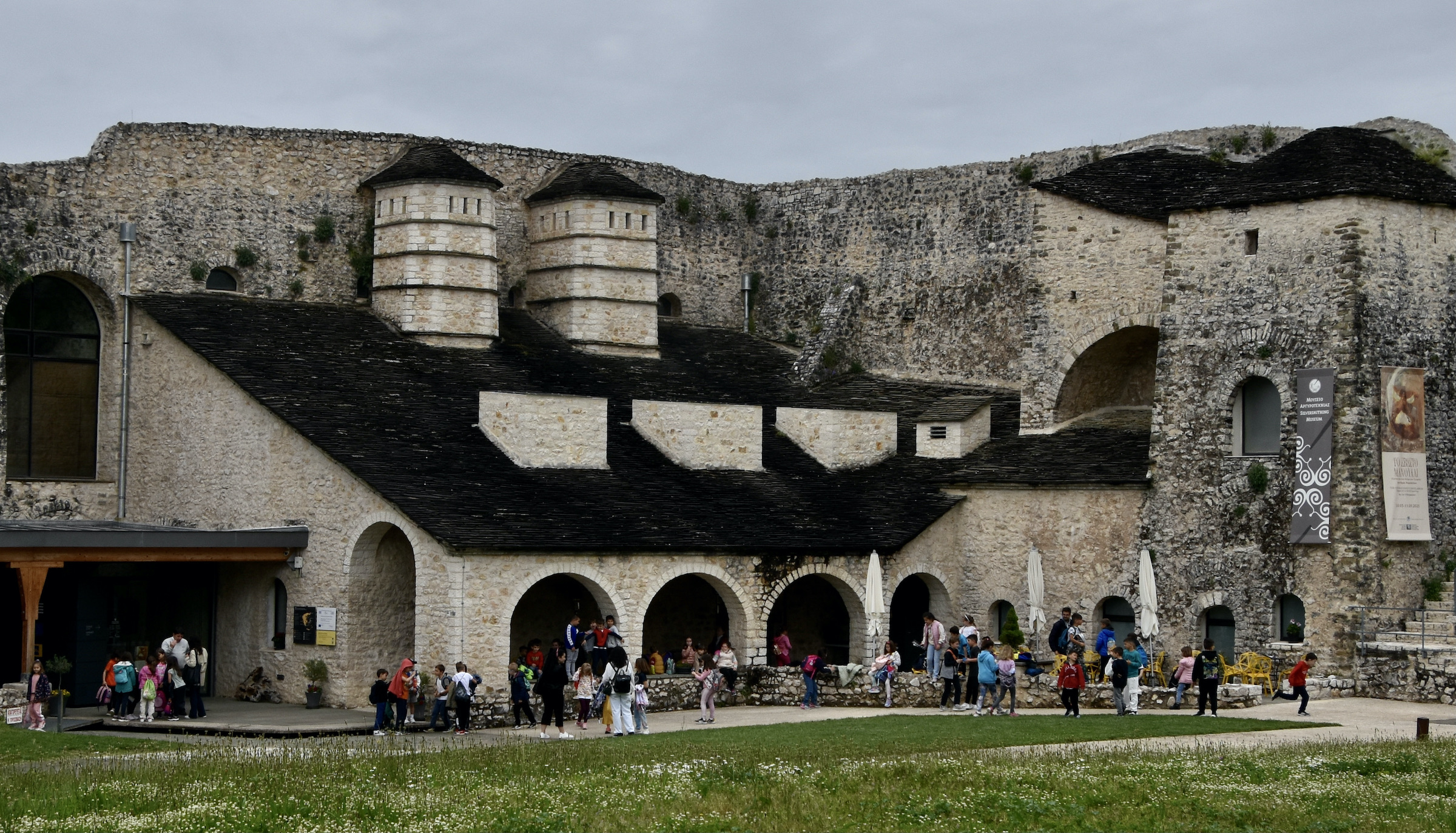
However, the highlight of any visit to Ioannina is usually the boat trip on Lake Pamvotida to visit Nissi Island where the infamous local despot Ali Pasha was hunted down and killed in 1822. I remember the first time I took this trip the lake was visually polluted and the island desultory to say the least. Today it’s completely different, with the waters clear and swans raising families along the shore.
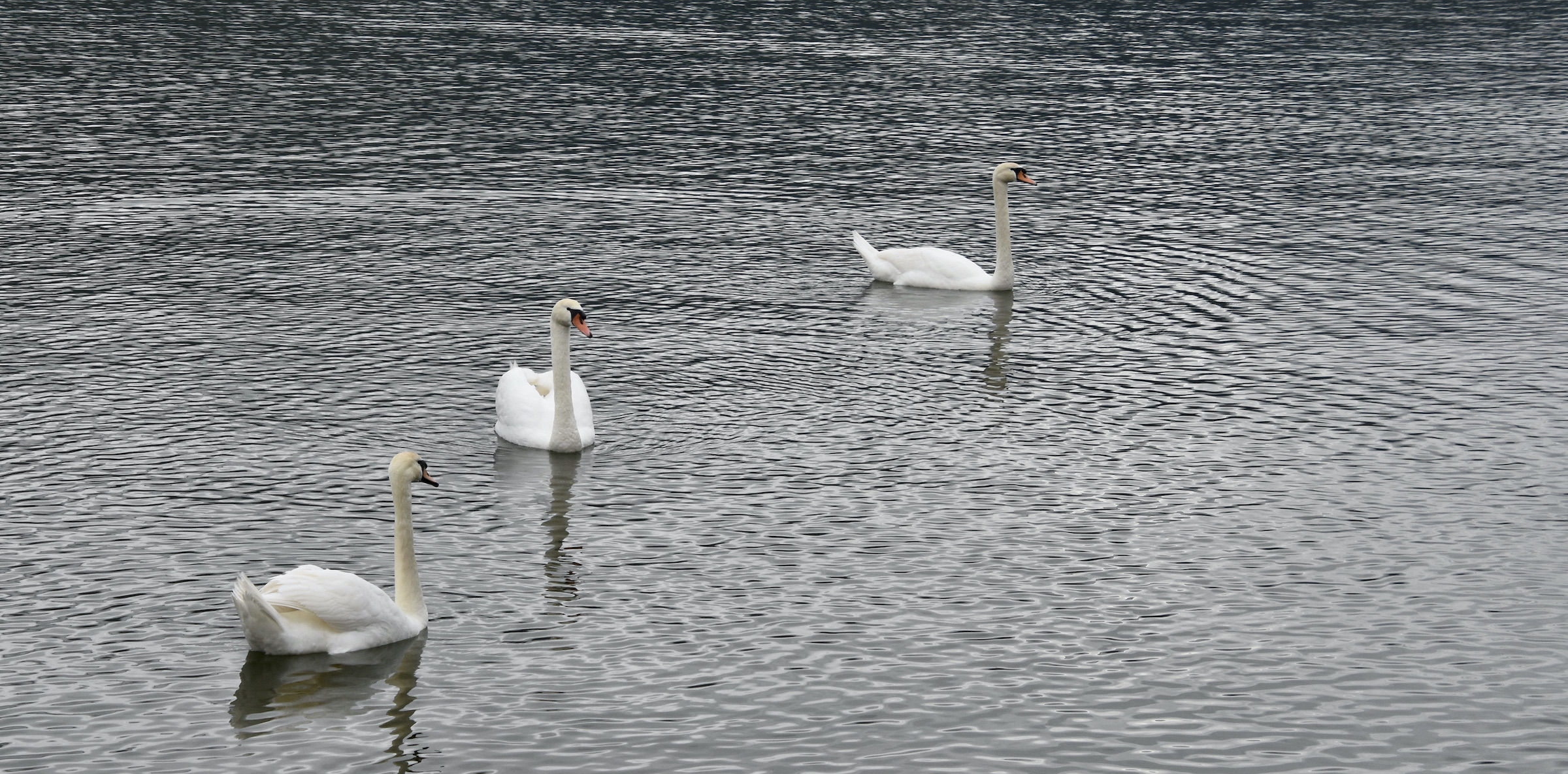
Returning to the hose where Ali Pasha was shot at age 82, everything on the island seems cleaner and the dour atmosphere I remember has dissipated.
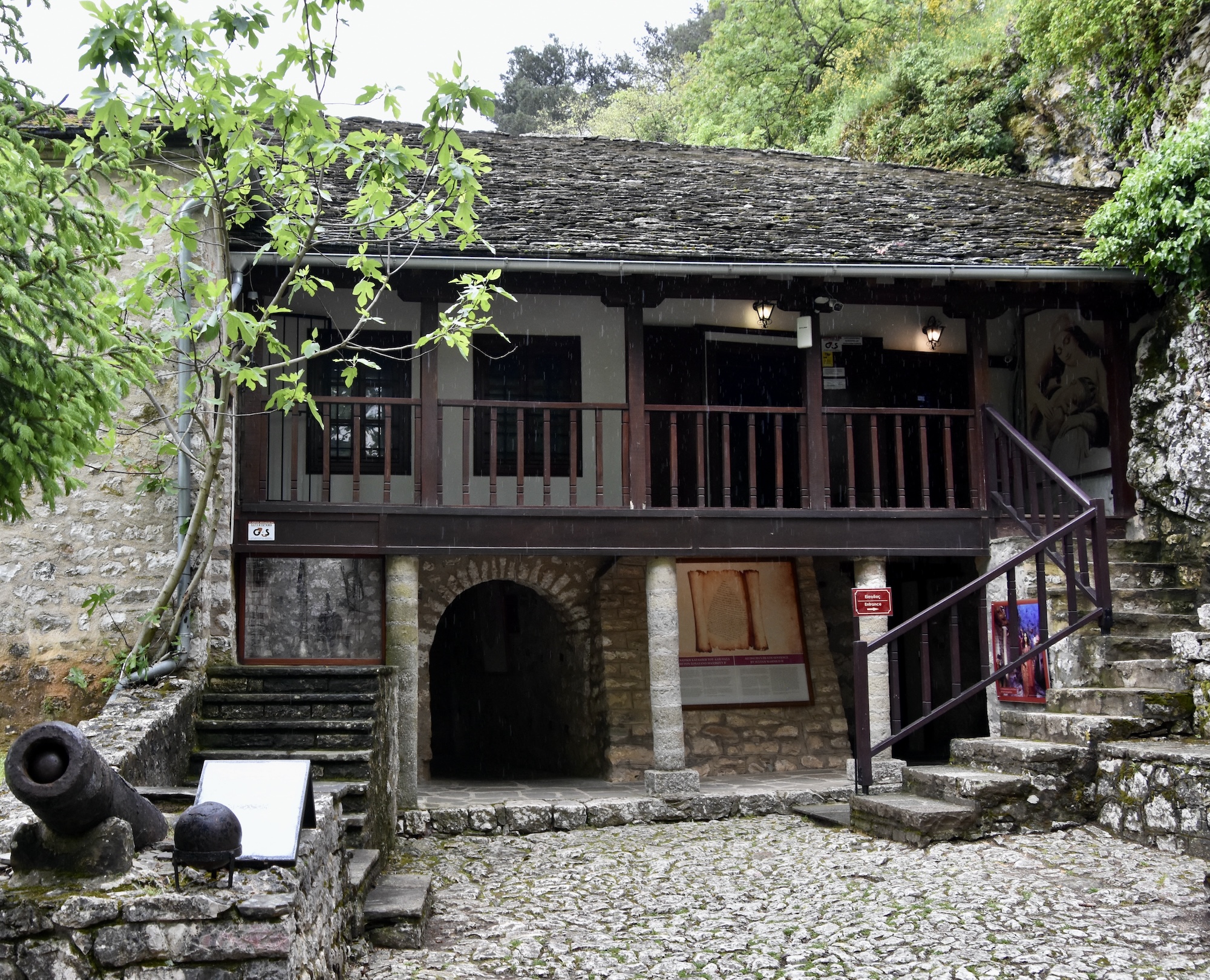
In 2010, Greece teetered on the brink of bankruptcy and in order to secure a bailout from the EU and the IMF, had to agree to what at the time seemed like dire austerity measures that led to massive protests, mostly from civil servants. In retrospect those changes, such as reducing the number of public companies from 6,000 to 2,000 and cutting the number of municipalities from 1,000 to 400 made imminent sense. Victor and I discussed the changes imposed on Greece at that time and the resentment that still lingers, a lot on this trip, but in my humble opinion Greece is a much better place today than it was during my first and second and third visits and nowhere is that more apparent than in a place like Ioannina. It is cleaner, the traffic is reasonably sane and it just seems more prosperous. Maybe it’s all an illusion, but I don’t think so. We’ll find out when Alison and I get to Athens.
Well, this ends what has been a very special trip for me, Alison, the group and I think Victor as well. It was the first trip that I had a hand in crafting and I hope it will not be the last. Also, with a little tinkering I think the Via Egnatia itinerary could become a signature Adventures Abroad tour that nobody else is offering. The eight UNESCO World Heritage Sites alone make it worthwhile, but add in the natural wonders of northern Greece and you’ve got something really special. I hope my readers have enjoyed these posts as much as I have enjoyed writing them.
This Greek odyssey is not yet over for Alison and me as we head for Athens where in the next post I’ll tell you how to visit the Acropolis without the crowds.

